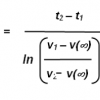So, I understand that PRL 8-53 is a dopamine agonist, along with its Histamine 3 inverse agonism and a host of other unknown MoAs. Now, it was mentioned that it potentiates the dopaminergic effects of other substances. However, it was also mentioned that PRL 8-53 *does not* potentiate the effects of amphetamines, but it only mentioned that in relation to its actions on serotonin and norepinephrine, ignoring dopamine altogether. Now, you can certainly tell where this is going, and why I labeled it as a "stupid" question. So, being that dopamine was not mentioned with regards to potentiation, I extrapolated that the dopaminergic effects of amphetamines are in fact potentiated by this substance, but without having seen this confirmed in the paper, I cant say definitively if this is true. Now, this may have been mentioned in the full study, but I only have access to the abstract and what I recall of the many PRL-related discussions on the web, here on Longecity as well as over on Reddit and a host of other sources, so that's what I'm basing my understanding on at the moment. Now, it's a bit embarrassing that I'd even be asking this, but I'm certainly far from a pharmacologist, just an individual with a strong curiosity for a plethora of topics, pharmacology/neurology-related or otherwise. Blame the Aspergers, haha. Now, I assume I'm right on this point, but there's certainly a chance I could be wrong. So, just for the sake of confirmation: correct or incorrect?
To update, after doing some more research on this topic, I've determined that my initial thoughts were correct. 3AlarmLampScooter mentioned that amphetamines and PRL-8-53 synergize well, which I've found to be the case as well. Indeed, the dopaminergic effects do seem to be potentiated with this combination. It's not definitive proof, and it is somewhat subjective, but it's good enough for me.
Where did you get the Histamine 3 inverse agonist from and the norepinephrine from? The paper does not talk about that at all. And afaik, they tested amphetamines and PRL and it did not potentiate, so they didn't just say it from a theoretical view.











































![PRL-8-53, dopamine agonist or not? [speculation] - last post by Keizo](https://www.longecity.org/forum/uploads/profile/photo-thumb-31592.jpg?_r=1403204609)



